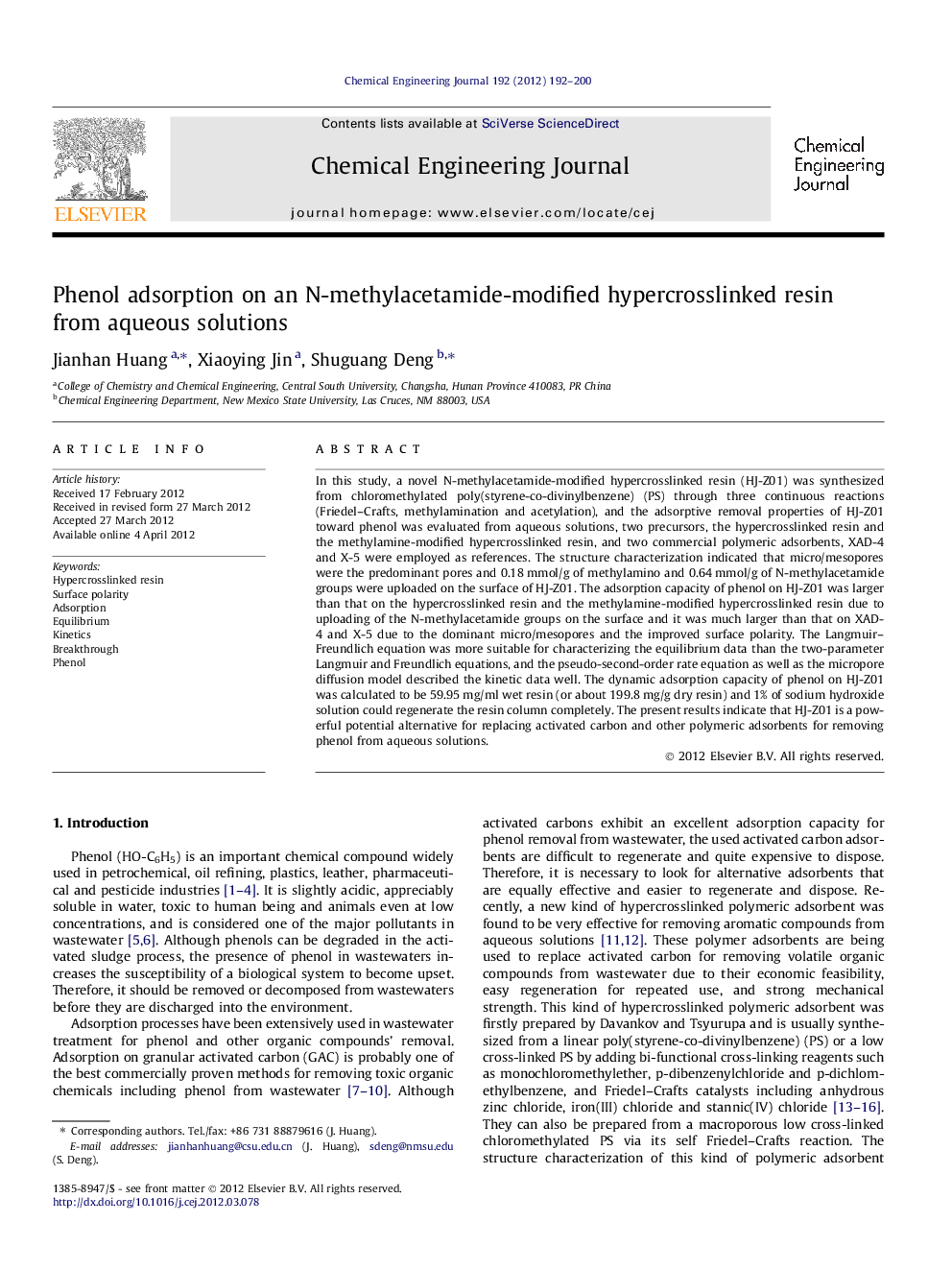| Article ID | Journal | Published Year | Pages | File Type |
|---|---|---|---|---|
| 149797 | Chemical Engineering Journal | 2012 | 9 Pages |
In this study, a novel N-methylacetamide-modified hypercrosslinked resin (HJ-Z01) was synthesized from chloromethylated poly(styrene-co-divinylbenzene) (PS) through three continuous reactions (Friedel–Crafts, methylamination and acetylation), and the adsorptive removal properties of HJ-Z01 toward phenol was evaluated from aqueous solutions, two precursors, the hypercrosslinked resin and the methylamine-modified hypercrosslinked resin, and two commercial polymeric adsorbents, XAD-4 and X-5 were employed as references. The structure characterization indicated that micro/mesopores were the predominant pores and 0.18 mmol/g of methylamino and 0.64 mmol/g of N-methylacetamide groups were uploaded on the surface of HJ-Z01. The adsorption capacity of phenol on HJ-Z01 was larger than that on the hypercrosslinked resin and the methylamine-modified hypercrosslinked resin due to uploading of the N-methylacetamide groups on the surface and it was much larger than that on XAD-4 and X-5 due to the dominant micro/mesopores and the improved surface polarity. The Langmuir–Freundlich equation was more suitable for characterizing the equilibrium data than the two-parameter Langmuir and Freundlich equations, and the pseudo-second-order rate equation as well as the micropore diffusion model described the kinetic data well. The dynamic adsorption capacity of phenol on HJ-Z01 was calculated to be 59.95 mg/ml wet resin (or about 199.8 mg/g dry resin) and 1% of sodium hydroxide solution could regenerate the resin column completely. The present results indicate that HJ-Z01 is a powerful potential alternative for replacing activated carbon and other polymeric adsorbents for removing phenol from aqueous solutions.
► A new strategy for tailoring pore texture and surface polarity of resins. ► Adsorption equilibrium, kinetics and breakthrough data of phenol on a new resin. ► Adsorption capacity of phenol more than doubled than that of commercial resins. ► Good agreement between equilibrium and dynamic capacity. ► Modeling of adsorption equilibrium, kinetic and breakthrough data.
